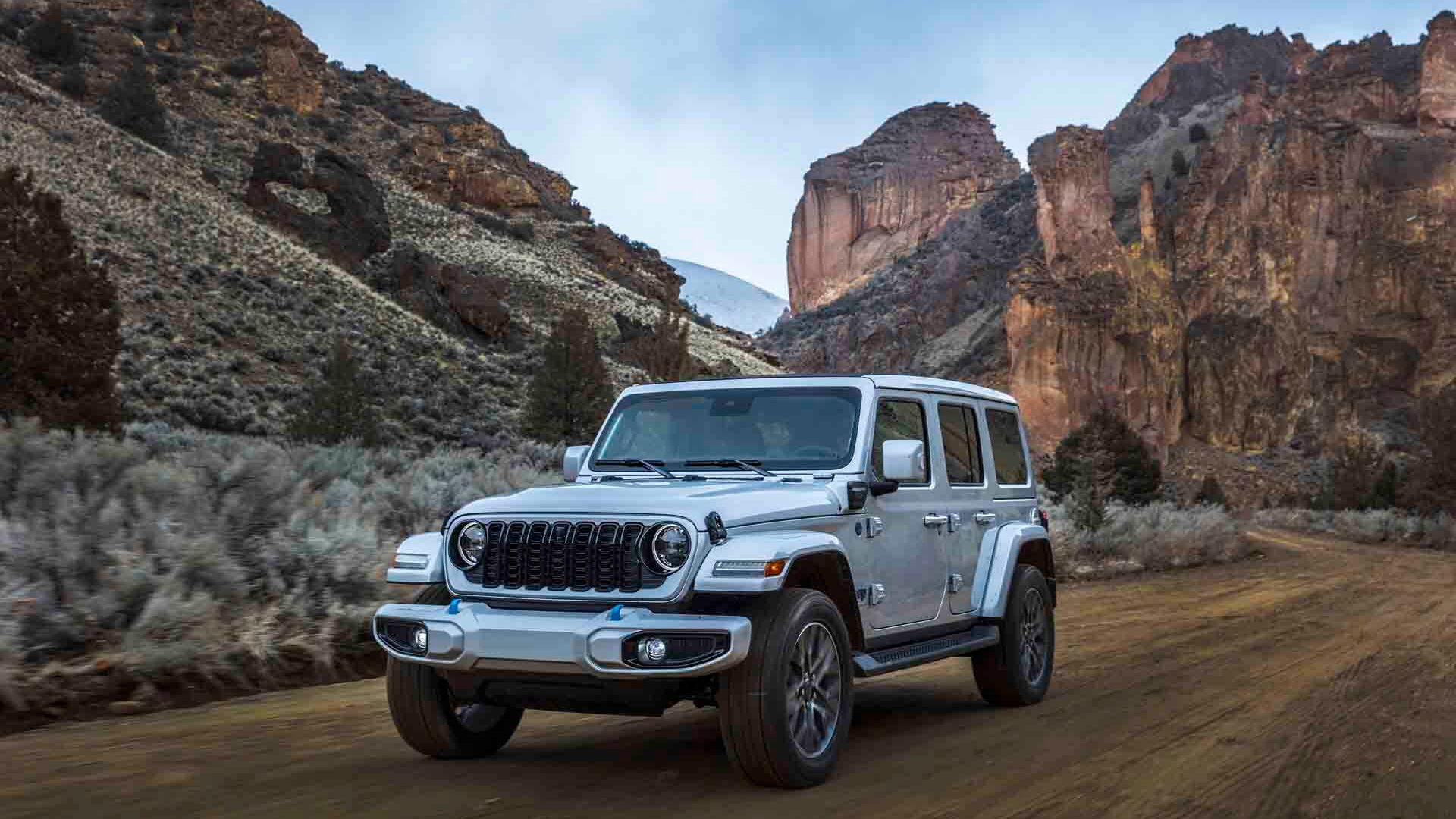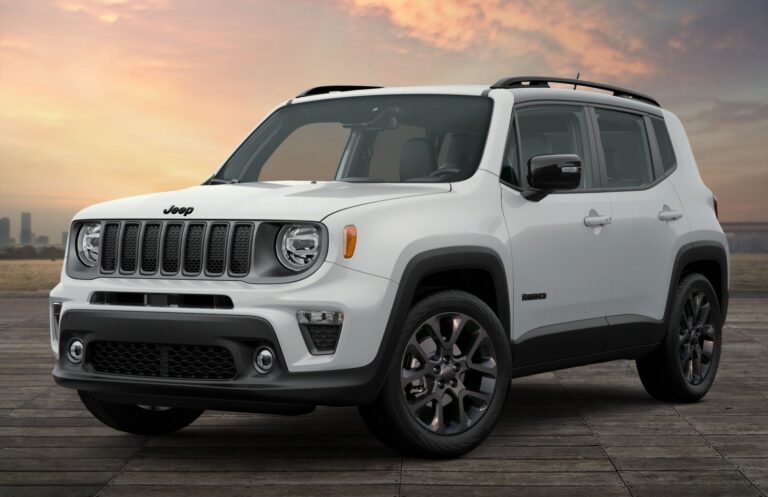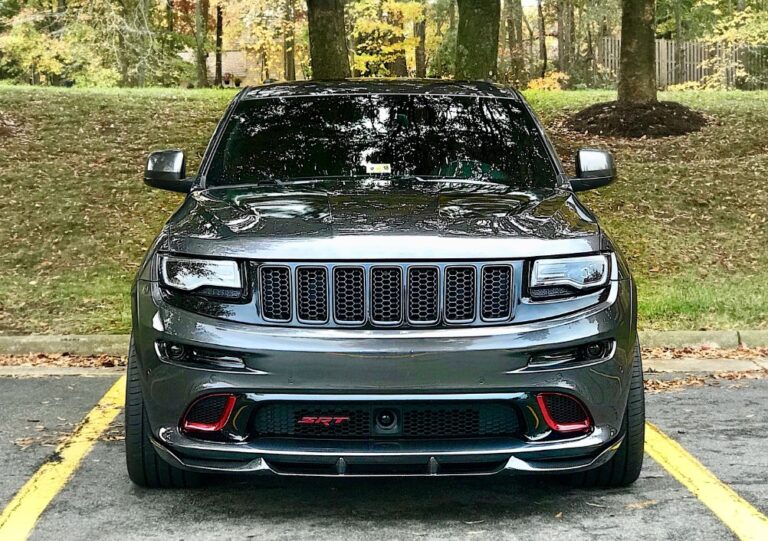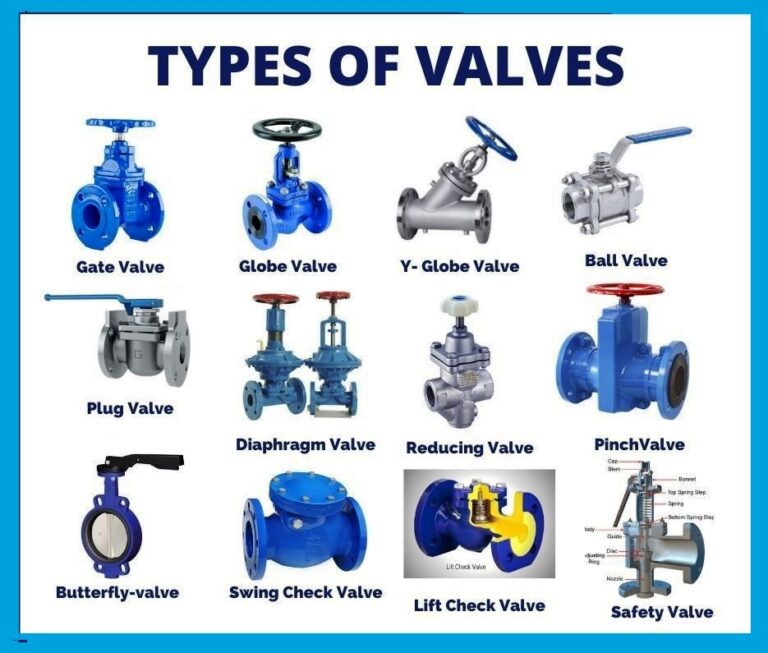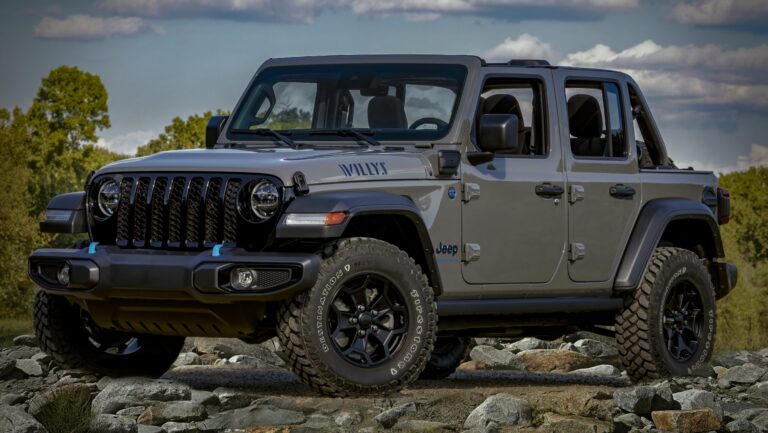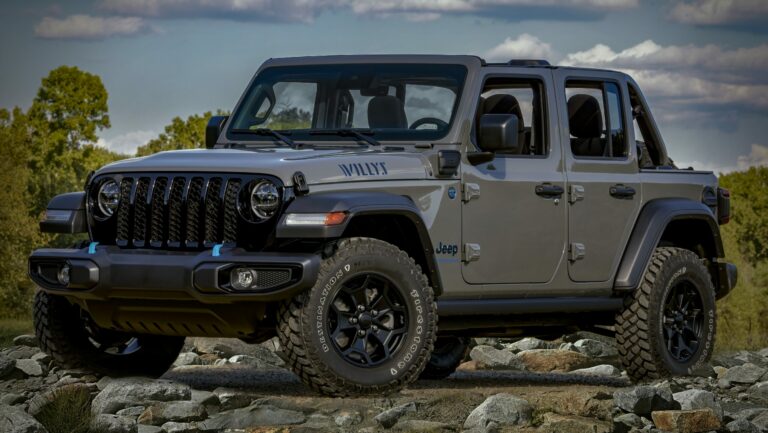Jeep SRT-10 Specs: Unveiling the Viper-Powered Beast (The Ram SRT-10 Story)
Jeep SRT-10 Specs: Unveiling the Viper-Powered Beast (The Ram SRT-10 Story) jeeps.truckstrend.com
When the term "Jeep SRT-10" comes to mind, it conjures images of an impossibly powerful SUV, perhaps a Grand Cherokee endowed with the heart of a supercar. However, it’s crucial to clarify a common misconception right from the outset: there was never a production "Jeep Grand Cherokee SRT-10." While Jeep did produce the formidable Grand Cherokee SRT-8 with a potent Hemi V8, the legendary 10-cylinder Viper engine found its way into another high-performance vehicle under the Chrysler umbrella: the Dodge Ram SRT-10.
This article, "Jeep SRT-10 Specs," will delve deep into the specifications of the vehicle most people are referring to when they mention an "SRT-10" from the era – the iconic Dodge Ram SRT-10. This truck was a marvel of engineering, a bold statement, and a true testament to American muscle, pushing the boundaries of what a pickup truck could be. It blended supercar performance with the utility (albeit limited) of a truck, creating a unique and highly sought-after collector’s item. Understanding its specifications is key to appreciating its significance and its place in automotive history.
Jeep SRT-10 Specs: Unveiling the Viper-Powered Beast (The Ram SRT-10 Story)
I. The Heart of the Beast: Engine and Powertrain
At the core of the Ram SRT-10’s formidable reputation lies its incredible engine. This wasn’t just a powerful truck engine; it was a direct transplant from one of the most iconic American sports cars ever built.
- Engine Type: Naturally Aspirated 8.3-liter (8,277 cc / 505 cu in) V10, derived directly from the third-generation Dodge Viper. This overhead valve (OHV) engine featured aluminum block and cylinder heads.
- Horsepower: 500 hp (373 kW) at 5,600 rpm. At the time of its release, this made it the most powerful production pickup truck in the world.
- Torque: 525 lb-ft (712 Nm) at 4,200 rpm. This immense torque provided staggering acceleration and pulling power, even though towing was not its primary design focus.
- Redline: 6,000 rpm.
- Fuel System: Sequential Multi-Port Electronic Fuel Injection.
- Transmission (Regular Cab): Tremec T-56 six-speed manual transmission. This heavy-duty, close-ratio manual gearbox was the same unit found in the Viper, providing a direct and engaging driving experience. It featured a Hurst shifter for precise, short throws.
- Transmission (Quad Cab): 48RE four-speed automatic transmission. Introduced for the Quad Cab model in 2005, this heavy-duty automatic was specifically modified by DaimlerChrysler’s Street and Racing Technology (SRT) group to handle the Viper engine’s immense torque.
- Drivetrain: Rear-wheel drive (RWD) only. Unlike most Ram trucks, the SRT-10 was strictly 2WD, prioritizing performance and handling over off-road capability. This decision contributed to its supercar-like acceleration figures.
- Differential: Dana 60 rear axle with a 4.56:1 final drive ratio, equipped with a limited-slip differential for optimal traction.
- Performance Figures:

- 0-60 mph: Approximately 4.9 to 5.2 seconds (Regular Cab), 5.6 to 5.8 seconds (Quad Cab).
- Quarter-Mile: Low 13-second range at around 106-108 mph.
- Top Speed: Electronically limited to 153 mph (Regular Cab), 147 mph (Quad Cab).
![]()
II. Chassis and Suspension: Taming the Power
To manage the Viper V10’s power and deliver a truly engaging driving experience, the Ram SRT-10 received a comprehensively re-engineered chassis and suspension system. This wasn’t just a lifted truck; it was a lowered, performance-tuned machine.
- Ride Height: The SRT-10 was significantly lowered compared to a standard Ram 1500. The Regular Cab sat 1 inch lower at the front and 2.5 inches lower at the rear. The Quad Cab had slightly different lowering for its heavier frame.
- Shocks: Custom-tuned Bilstein monotube shock absorbers were fitted at all four corners, providing firm damping and excellent body control.
- Springs: Stiffer spring rates were used, specifically designed for performance driving, reducing body roll and improving responsiveness.
- Sway Bars: Larger diameter, heavy-duty anti-roll bars were installed at both the front and rear to minimize body lean during cornering.
- Bushings: Performance-oriented bushings replaced standard rubber components for a more direct feel and improved handling precision.
- Steering: A quicker steering ratio was implemented to enhance steering response and feedback, making the large truck feel surprisingly agile.
- Wheels: Unique 22-inch polished aluminum wheels were standard, boasting a striking five-spoke design. These were the largest factory wheels ever fitted to a production truck at the time.
- Tires: Custom-developed Pirelli Scorpion Zero asymmetrical performance tires were specifically engineered for the SRT-10, sized 305/40 R22 at all four corners. These provided immense grip for acceleration and cornering.
III. Braking System: Stopping the Momentum
With 500 horsepower on tap, stopping power was paramount. The Ram SRT-10 featured a robust braking system to match its extreme performance capabilities.
- Front Brakes: Massive 15-inch (381 mm) vented disc brakes with two-piston opposed-piston calipers (sourced from Brembo, though not explicitly branded Brembo on all parts).
- Rear Brakes: 14-inch (356 mm) vented disc brakes with single-piston calipers.
- Brake Calipers: Red-painted calipers were a signature SRT touch.
- Anti-lock Braking System (ABS): Standard, enhancing control during emergency braking.
- Braking Performance: The system was capable of bringing the truck from 60 mph to a standstill in approximately 120-130 feet, impressive for a vehicle of its size and weight.
IV. Exterior Design and Aerodynamics
The Ram SRT-10 wasn’t just fast; it looked the part. Its exterior design was aggressive, functional, and instantly recognizable, distinguishing it from a standard Ram 1500.
- Hood: A prominent power bulge hood with an integrated, functional ram-air scoop fed cool air to the Viper engine.
- Front Fascia: A unique, aggressive front bumper with large air intakes for cooling and integrated fog lamps replaced the standard Ram bumper.
- Grille: A body-colored grille with a distinctive crosshair design and SRT-10 badging.
- Side Skirts: Body-colored side sills (side skirts) created a lower, more planted visual stance and improved aerodynamics.
- Rear Spoiler (Regular Cab): The Regular Cab model featured a functional rear spoiler mounted on the tailgate, contributing to downforce and stability at high speeds. This was deleted on the Quad Cab for practicality.
- Tailgate: A unique tailgate with integrated badging.
- Exhaust: Dual polished exhaust tips exited beneath the rear bumper, hinting at the power within.
- Badging: "Viper Powered" badges adorned the front fenders, proudly displaying its heritage, alongside SRT-10 badges.
V. Interior Features and Comfort
While focused on performance, the interior of the Ram SRT-10 still offered a good level of comfort and unique styling cues that set it apart.
- Seating: Heavily bolstered sport seats with suede inserts and embroidered SRT-10 logos provided excellent support during spirited driving.
- Instrumentation: White-faced gauges with blue accents and an oil temperature gauge specific to the Viper engine. The tachometer was prominently placed.
- Shifter: A unique, silver-finished Hurst shifter for the manual transmission Regular Cab.
- Trim: Silver metallic trim accents adorned the dashboard and door panels, contrasting with the dark interior.
- Pedals: Aluminum racing pedals were standard.
- Steering Wheel: A leather-wrapped, performance-oriented steering wheel.
- Audio System: An Infinity sound system with a CD changer was typically standard, offering good audio quality.
- Climate Control: Dual-zone automatic climate control was available.
- Model Differences: The Regular Cab offered seating for three (or two with a center console), while the Quad Cab provided seating for five with full rear doors and more passenger space, albeit at a slightly increased weight and with an automatic transmission only.
VI. Model Variations and Production
The Ram SRT-10 was a limited-production vehicle, adding to its exclusivity and collector status.
- 2004 Model Year: Exclusively available as a Regular Cab, two-door, short-bed model with the Tremec T-56 six-speed manual transmission. This was the rawest and fastest variant. Production: Approximately 3,057 units.
- 2005 Model Year:
- Regular Cab: Continued with the manual transmission.
- Quad Cab: Introduced as a four-door, longer-wheelbase model, exclusively with the 48RE four-speed automatic transmission. This offered more practicality but was slightly slower due to increased weight and the automatic transmission.
- Night Runner Edition (2005): A special edition package for both Regular and Quad Cabs, featuring Brilliant Black paint, black chrome wheels, unique badging, and interior accents. Limited to 400 units (200 Regular Cab, 200 Quad Cab).
- 2006 Model Year: Limited production run to fulfill remaining orders.
- Total Production: Approximately 10,046 units globally over its three-year run (2004-2006), making it a relatively rare performance vehicle.
VII. Owning a Ram SRT-10: Important Considerations
For those considering ownership or simply marveling at this automotive icon, understanding the practicalities is crucial.
- Fuel Economy: As expected, the Viper V10 is a thirsty beast. EPA ratings were typically around 9-10 mpg city and 14-15 mpg highway. Premium fuel is required.
- Maintenance Costs: While the engine is robust, Viper-specific parts and specialized labor can be more expensive than for a standard pickup. Tires (22-inch Pirelli Scorpions) are also a significant expense.
- Driving Experience: The Ram SRT-10 is a visceral machine. The manual transmission Regular Cab is raw and engaging, while the Quad Cab offers a slightly more relaxed (but still exhilarating) experience. It’s loud, powerful, and demands respect.
- Collector Value: Due to its limited production, unique powertrain, and iconic status, the Ram SRT-10 has maintained strong collector appeal and values have steadily appreciated for well-maintained examples.
- Practicality: While it’s a truck, its lowered stance, performance tires, and stiff suspension limit its utility for heavy hauling or off-roading. It’s best viewed as a high-performance vehicle with a bed.
- Common Issues: While generally reliable, potential issues can include clutch wear (on manuals), differential noise, and specific electrical quirks. A pre-purchase inspection by an SRT-knowledgeable mechanic is highly recommended.
Practical Advice and Actionable Insights
For enthusiasts looking to acquire or maintain a Ram SRT-10:
- Research Thoroughly: Understand the differences between the Regular Cab and Quad Cab, and manual vs. automatic. Your driving style will dictate the best fit.
- Inspect Diligently: Look for signs of abuse, accident damage, and deferred maintenance. Check the clutch (if manual), brakes, tires, and listen for any unusual drivetrain noises.
- Budget for Fuel and Maintenance: These are not inexpensive vehicles to run. Factor in premium fuel, regular oil changes, and potential for more costly repairs.
- Join the Community: SRT-10 owners’ forums and clubs are invaluable resources for advice, parts, and technical support.
- Drive Responsibly: With 500 horsepower, it’s easy to get into trouble. Respect the power and enjoy it safely.
Ram SRT-10 Specifications Table
| Category | Specification (Regular Cab) | Specification (Quad Cab) |
|---|---|---|
| Engine | 8.3L V10 (Viper Engine) | 8.3L V10 (Viper Engine) |
| Horsepower | 500 hp @ 5,600 rpm | 500 hp @ 5,600 rpm |
| Torque | 525 lb-ft @ 4,200 rpm | 525 lb-ft @ 4,200 rpm |
| Transmission | Tremec T-56 6-speed manual | 48RE 4-speed automatic |
| Drivetrain | Rear-Wheel Drive (RWD) | Rear-Wheel Drive (RWD) |
| 0-60 mph | ~4.9 – 5.2 seconds | ~5.6 – 5.8 seconds |
| Top Speed | 153 mph (electronically limited) | 147 mph (electronically limited) |
| Brakes (Front) | 15-inch Vented Discs w/ 2-piston calipers | 15-inch Vented Discs w/ 2-piston calipers |
| Brakes (Rear) | 14-inch Vented Discs w/ 1-piston calipers | 14-inch Vented Discs w/ 1-piston calipers |
| Wheels | 22-inch Polished Aluminum (5-spoke) | 22-inch Polished Aluminum (5-spoke) |
| Tires | Pirelli Scorpion Zero 305/40 R22 | Pirelli Scorpion Zero 305/40 R22 |
| Suspension | Lowered, Bilstein shocks, performance springs, sway bars | Lowered, Bilstein shocks, performance springs, sway bars |
| Curb Weight | ~5,150 lbs (2,336 kg) | ~5,600 lbs (2,540 kg) |
| Fuel Economy | ~9-10 MPG City / 14-15 MPG Highway | ~9-10 MPG City / 14-15 MPG Highway |
| Production Years | 2004-2006 | 2005-2006 |
Ram SRT-10 Market Value (Approximate, USD)
Please note that these are approximate ranges and can vary significantly based on mileage, condition, maintenance history, location, and specific collector demand.
| Model Year | Configuration | Condition (General) | Approximate Price Range (USD) |
|---|---|---|---|
| 2004 | Regular Cab | Fair – Good | $30,000 – $45,000 |
| 2004 | Regular Cab | Excellent – Collector | $45,000 – $60,000+ |
| 2005 | Regular Cab | Fair – Good | $30,000 – $45,000 |
| 2005 | Regular Cab | Excellent – Collector | $45,000 – $60,000+ |
| 2005 | Quad Cab | Fair – Good | $35,000 – $50,000 |
| 2005 | Quad Cab | Excellent – Collector | $50,000 – $70,000+ |
| 2006 | Regular/Quad | Fair – Good | $35,000 – $55,000 |
| 2006 | Regular/Quad | Excellent – Collector | $55,000 – $75,000+ |
| Special Editions (e.g., Night Runner) | Generally add 10-20% to value based on rarity and condition. |
Frequently Asked Questions (FAQ) about the Ram SRT-10
Q: Was there ever a Jeep SRT-10?
A: No, there was never a production "Jeep Grand Cherokee SRT-10." The performance Grand Cherokee was the SRT-8, which used a Hemi V8 engine. The "SRT-10" designation and the Viper V10 engine were exclusively used in the Dodge Ram SRT-10 pickup truck.
Q: What engine is in the Ram SRT-10?
A: The Ram SRT-10 is powered by the same 8.3-liter (505 cubic inch) V10 engine found in the third-generation Dodge Viper. It produced 500 horsepower and 525 lb-ft of torque.
Q: Is the Ram SRT-10 rare?
A: Yes, it is relatively rare. Total production numbers for the Ram SRT-10 were approximately 10,046 units globally across its 2004-2006 model years. This limited production contributes to its collector appeal.
Q: Is the Ram SRT-10 reliable?
A: Generally, the Viper V10 engine is known for its robustness. However, as with any high-performance vehicle, proper maintenance is crucial. Wear items like clutches (on manual models) and high-performance tires can be expensive to replace. Electrical quirks, typical of vehicles from that era, can sometimes occur.
Q: What’s the difference between the Regular Cab and Quad Cab Ram SRT-10?
A: The Regular Cab is a two-door, short-bed truck exclusively available with a 6-speed manual transmission. It’s lighter and generally considered the more performance-oriented and raw variant. The Quad Cab is a four-door, longer-wheelbase model, exclusively equipped with a 4-speed automatic transmission. It offers more passenger space and practicality but is heavier and slightly slower.
Q: Is the Ram SRT-10 a good daily driver?
A: It can be a daily driver, but it’s not ideal for everyone. Its firm suspension, high fuel consumption, and large turning radius can make it less comfortable for everyday commuting. It shines as a weekend toy or a performance enthusiast’s vehicle.
Q: Can the Ram SRT-10 tow?
A: While it’s a truck with a powerful engine, the Ram SRT-10’s focus was on performance, not towing. Its lowered suspension, RWD-only drivetrain, and specific tire setup limit its towing capacity significantly compared to a standard Ram 1500. It’s generally not recommended for heavy towing.
Concluding Summary
The "Jeep SRT-10" as a concept remains a fascinating idea, but in reality, the title belongs to the magnificent Dodge Ram SRT-10. This truck was a boundary-pushing machine, a true testament to the audacity and engineering prowess of the Street and Racing Technology (SRT) division. By taking the ferocious 8.3-liter Viper V10 and shoehorning it into a pickup truck chassis, Dodge created a vehicle unlike any other – a muscle truck that could outrun many sports cars.
Its specifications, from the earth-shaking 500 horsepower and 525 lb-ft of torque to its lowered, performance-tuned suspension and massive Brembo brakes, all speak to its singular purpose: unadulterated speed and excitement. While not a "Jeep," the Ram SRT-10 embodies the spirit of extreme performance that the SRT brand is known for. Today, it stands as a highly desirable collector’s item, a loud, proud, and incredibly fast reminder of a unique era in automotive history. Its legacy is cemented as one of the most extreme and unforgettable production trucks ever built.
